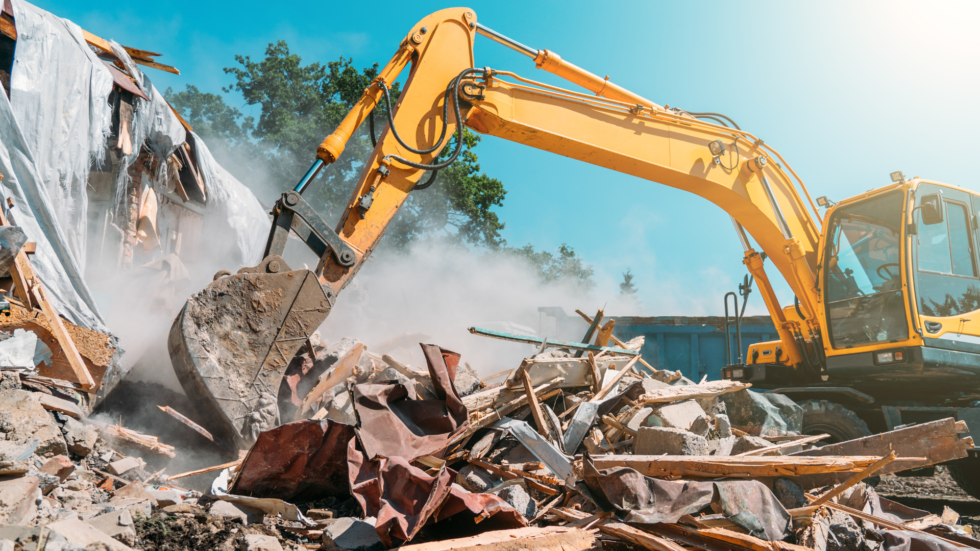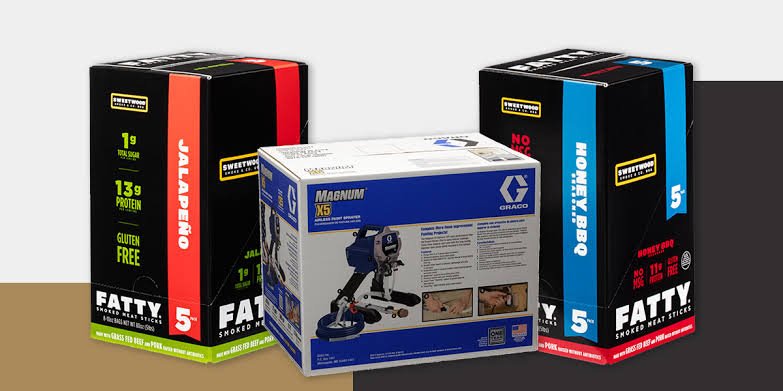Business
A Complete Guide to Garage Door Seals: Types, Installation, and Maintenance

Garage doors play a vital role in making our homes and household items safe but sometimes their presence may be irritating due to loss of energy. They can be the point of entry for pests if not sealed properly. Now here is the use of Garage Door Seals. In this article, we will discuss in complete detail what is important to know about garage door seals, what is garage door seals, their different type in the local or international markets, the complete procedure to use them, proper installation, their maintenance, and when required their removal.
Types of Garage Door Seals:
A material that is needed to seal the door of the garage by filling the gaps and spaces to control the temperature inside the garage and disallows entry of pests, dust, water, and air and saves energy loss known as garage door seals. A few of Garage Door Seal Types are as follows :
1. Seals which are installed between the door and floor to act as a barrier. They are available in different sizes and materials. Few are of rubber and others are of vinyl. They are called bottom seals.
2. Seals are installed in between the door frame and doors to protect gaps. They are also made up of two different materials, PVC and rubber for sealing off gaps and stopping the passage of materials known as side sealing.
3. Header seals are installed on the upper side of the door and roof to fill the gaps. It also prevents insects, air, and moisture from entering from the upper side of the door.
Efficient Way to Seal a Garage Door:
Assessment and Preparation
Before installation of the seal, it is necessary to inspect the door from all sides properly and notice all points or places from where air, moisture, or insects can enter. Use the torch light technique as well to confirm the gaps or spaces. This will help you to identify the gaps easily and effectively.
Now when you are done with the identification of problem areas or gaps, mark them properly. After identifying the gaps, the second process is to clean all the surfaces of old sealant, moisture, or dirt. It can also be cleaned by using any good detergent and then leave for some time to dry it completely. When it is completely dry then proceed with the installation.
Cleaning of old Seals:
Clean the old garage door seals with a knife or scraper gently. Ensure that the door or frame should not get damaged. After the cleaning process when you are satisfied that the surface I completely smooth then you may proceed with the installation of the seal.
Installation:
Measure the length of the Surfaces around the door where you want to install the seals. Use a suitable quality knife or scissors to cut the seals into pieces of sizes already measured in length. It should be overlapped from corners to ensure a tight seal.
Proceed with the installation from the bottom seal and join it with the help of some adhesive material or screws, which also depends upon the kind of seal you are using and the make and type of your door.
After the Installation of the bottom seal, you may begin with the side seals vertically. Make sure that the sealant is joined and flushed against the frame.
Now at last, join the top Seal with the header or ceiling so that it overlaps with the side seals for complete coverage. Make sure to join sealant with adhesive or screws to form a tight seal opposite to the door when closed.
Adjustment and Maintenance:
When the seal is installed, shut the door to check whether all the gaps are covered. If at all any last adjustments are required to tighten the seal around the door.
After Installation, daily inspect the seals of your garage door for any damage, cracks, loose fittings, or tears. Apply some soap to clean the complete surface gently.
Conclusion:
Garage door seals play an important role in keeping your home and belongings safe. It also helps to maintain the effectiveness, quality, and temperature of your garage.
After knowing different types of seals, their availability in the market, and inspecting your garage door, and ensuring proper procedures of maintenance, and correct installation, the Life of seals may be increased to maximum.
These are some tips, with the help of which you can obtain maximum benefits from your garage door.
Business
Everything You Need to Reduce Waste in Your Demolition Business
In the world of construction and demolition, waste reduction isn’t just a buzzword—it’s a necessity. Not only does effective waste management help in complying with environmental regulations, but it also enhances your business’s efficiency and profitability. Here’s a comprehensive guide on how to minimize waste in your demolition business, from planning to execution.

In the world of construction and demolition, waste reduction isn’t just a buzzword—it’s a necessity. Not only does effective waste management help in complying with environmental regulations, but it also enhances your business’s efficiency and profitability. Here’s a comprehensive guide on how to minimize waste in your demolition business, from planning to execution.
1. Pre-Demolition Planning
The key to minimizing waste begins long before the wrecking ball swings. Implementing advanced demolition techniques, such as using Texas shredders, can efficiently process materials on-site, facilitating easier sorting and recycling of debris.
Proper planning involves:
- Site Assessment: Conduct a thorough assessment of the site to identify salvageable materials and hazardous substances.
- Material Inventory: Create an inventory of all materials on-site. This helps in planning for salvage, recycling, or disposal.
- Deconstruction vs. Demolition: Consider deconstruction over demolition where feasible. Deconstruction involves carefully dismantling structures to salvage materials like wood, metals, and fixtures for reuse.
2. Salvage and Recycling
Salvaging and recycling materials significantly reduces landfill waste and can even generate revenue. Steps to consider include:
- Identifying Salvageable Materials: Determine which materials can be salvaged, such as bricks, metals, doors, and windows.
- Partnering with Recycling Facilities: Establish relationships with recycling centers to ensure that salvageable materials are properly processed and recycled.
- Reusing Materials On-Site: Utilize salvaged materials in future construction projects or sell them to contractors or homeowners looking for cost-effective building materials.
3. Waste Management During Demolition
During the demolition phase, effective waste management practices are crucial:
- Segregation: Separate materials at the source to facilitate recycling. Use designated bins or containers for different types of waste (e.g., wood, metal, concrete).
- Hazardous Waste Handling: Safely handle and dispose of hazardous materials such as asbestos, lead-based paints, and chemicals in accordance with local regulations.
4. Utilizing Advanced Demolition Techniques
Modern demolition techniques can help minimize waste:
- Selective Demolition: Target specific areas for demolition to minimize overall waste generation.
- Mechanical Demolition: Use machinery like shears and crushers to process materials on-site, allowing for easier sorting and recycling.
5. Post-Demolition Cleanup and Inspection
After demolition, thorough cleanup and inspection are essential:
- Clearing Debris: Remove all debris from the site promptly to prevent safety hazards and environmental contamination.
- Environmental Assessment: Conduct an environmental assessment post-demolition to ensure compliance with regulations and identify any residual contamination.
6. Documentation and Reporting
Documenting your waste reduction efforts is not only good practice but can also be beneficial for your business:
- Record Keeping: Maintain records of materials salvaged, recycled, and disposed of to track progress and compliance.
- Reporting: Prepare reports for clients, stakeholders, and regulatory bodies detailing your waste reduction and recycling initiatives.
7. Educating Your Team and Clients
Educating your team and clients about the importance of waste reduction can foster a culture of sustainability:
- Training Programs: Provide training on waste management practices, safety protocols, and environmental regulations.
- Client Communication: Engage clients in discussions about waste reduction options and the benefits of sustainable demolition practices.
Conclusion
Implementing effective waste reduction strategies in your demolition business not only reduces environmental impact but also enhances operational efficiency and profitability. By integrating these practices into your workflow—from meticulous planning and salvage efforts to advanced demolition techniques and comprehensive waste management—you can position your business as a leader in sustainable construction practices. Embrace the challenge of reducing waste, and you’ll find that sustainability and success go hand in hand in the demolition industry.
Business
Stand Out On The Shelf With Complete Custom Packaging

In today’s competitive market, standing out on the shelf is essential for any brand. Custom packaging can play a crucial role in making your products more appealing to consumers. At ePac, we offer a range of customizable packaging solutions designed to help your brand capture attention and maintain product quality. Let’s explore how you can achieve this with our complete custom packaging options.
Design Your Own Attention-Grabbing Look
One of the most significant advantages of custom packaging is the ability to design your own attention-grabbing look. With ePac’s customizable options, you can create unique packaging that reflects your brand’s identity. Whether you’re looking to use vibrant colors, intricate designs, or bold logos, our flexible packaging film can accommodate your vision. Custom packaging allows you to make a memorable first impression, which is crucial for attracting new customers and retaining existing ones.
Preserve Product Quality
Beyond aesthetics, custom packaging also plays a vital role in preserving product quality. ePac’s high-quality materials, such asmylar bags, provide excellent barrier properties that protect your products from moisture, oxygen, and light. This ensures that your goods remain fresh and safe for consumption, extending their shelf life and maintaining their quality. For instance, ourcustom stand up pouches are perfect for keeping food items fresh and flavorful while offering a convenient packaging solution for consumers.
Enhance Brand Recognition
Custom packaging is a powerful tool for enhancing brand recognition. By consistently using your brand’s colors, logo, and messaging across all packaging, you create a cohesive and recognizable brand image. This consistency helps build trust with consumers, making them more likely to choose your products over competitors. At ePac, we offer a range of customization options, allowing you to create packaging that is unmistakably yours. From flexible packaging film to custom stand-up pouches, we provide the tools you need to reinforce your brand’s presence in the market.
Eco-Friendly Packaging Options
Sustainability is increasingly important to consumers, and incorporating eco-friendly packaging into your strategy can give your brand a competitive edge. ePac offers sustainable packaging options that reduce environmental impact without compromising on quality or appearance. Our eco-friendly materials and innovative designs demonstrate your commitment to sustainability, resonating with environmentally-conscious consumers and enhancing your brand’s reputation.
Versatile and Functional Packaging
Custom packaging isn’t just about looking good; it’s also about functionality. ePac’s packaging solutions are designed to be versatile and practical, catering to a wide range of product types and consumer needs. For example, our custom stand-up pouches are not only visually appealing but also provide convenience with features like resealable zippers and tear notches. This combination of form and function ensures that your packaging meets the needs of both your products and your customers.
Wrapping It Up!
Custom packaging from ePac offers numerous benefits that help your brand stand out on the shelf. From designing an attention-grabbing look to preserving product quality and enhancing brand recognition, our packaging solutions are tailored to meet your needs. By choosing custom packaging, you can create a lasting impression, build customer loyalty, and drive sales.
Ready to make your products stand out? Explore our range offlexible packaging film, mylar bags, and custom stand up pouches to find the perfect solution for your brand.
For more insights and to explore related products, visit our blog and other product pages on our website. Contact us today to start designing your custom packaging and elevate your brand’s presence.
Contact ePac now to start designing your custom packaging and see how we can help your brand stand out on the shelf.
Business
How To Impress Investors With Your Next Corporate Luncheon

Hosting a corporate luncheon can be a pivotal moment for securing investor interest and showcasing your company’s potential. It’s not merely a meal but a strategically orchestrated event that reflects your corporate culture, attention to detail, and value proposition. Creating an event that resonates with investors takes more than just good food; it requires a keen understanding of what makes them tick, what piques their interest, and what keeps them engaged. Keep reading to discover the key elements that can transform your next corporate luncheon into a powerful opportunity to impress and connect with your investors.
Selecting the Perfect Venue and Menu to Appeal to Sophisticated Palates
Choosing the right venue is fundamental to the success of your corporate luncheon. It must reflect the caliber of the meeting and your organization’s stature. The space should accommodate easy flow for networking, be equipped with quality audio-visual capabilities for presentations, and have a refined atmosphere that suits the tone of your event.
When it comes to catering, sophisticated palates demand exceptional cuisine. Enlisting a premium catering service for Los Angeles event catering can make all the difference. With a professional team of caterers at your disposal, you can offer a menu of delicious food that not only tastes exquisite but also accommodates diverse dietary preferences—all while ensuring the presentation is on-point and complements the theme of your luncheon.
Wine pairings, artisanal appetizers, and gourmet dishes signal to investors that no detail is too small when it comes to their experience. However, keep the menu balanced. Excessive richness or too avant-garde choices could distract from the networking and dialogue that are the true purposes of the event.
Remember, the dining experience is a sensory impression of your company. Ensure each culinary aspect of your luncheon tells the story of a business that values quality, sophistication, and meticulous attention to detail.
Understanding Investor Expectations for a Corporate Luncheon
In planning a corporate luncheon for investors, it’s crucial to begin with their expectations. Investors are routinely invited to corporate gatherings, meaning they have a reference point and standards. Yours needs to stand out. They anticipate a level of professionalism, sophistication, and a clear message about your company’s direction. Communicate these themes through every aspect of the event, from invitations to the closing remarks.
Investor expectations are not solely based on the visual or gastronomic experience. Content is king; thus, ensure the program is content-rich, offering valuable insights into your company’s achievements, goals, and future prospects. They seek to be informed, engaged, and, most importantly, convinced of the value of investing in your enterprise.
Convenience and comfort are also critical. Your guests should not have to navigate complicated logistics to attend. Choosing an easily accessible location reflects your understanding and respect for their time. Moreover, the atmosphere should promote relaxation and openness, fostering a productive environment for discussions.
Finally, respect their time by maintaining a strict schedule. Start and end as promised. Investors will appreciate a well-organized event that respects their valuable time, leaving a lasting impression of efficiency and consideration.
Incorporating Effective Networking Opportunities into Your Luncheon Schedule
A critical component of any corporate luncheon is the opportunity for investors to network. Structuring your event to encourage organic interaction is essential. Consider a mix of formal presentations and casual mingling sessions to foster meaningful connections.
Design the layout of your venue to create natural gathering spots. Round tables encourage group discussions, while quieter corners allow for more private conversations. Ensure your event staff understands the significance of seamless service that supports, rather than interrupts, these important interactions.
Equally important is providing a clear context for networking. Facilitators or conversation starters can be designated to help guide discussions and ensure no investor is left without engagement. This strategy is particularly helpful for introverted attendees or individuals unfamiliar with the rest of the guest list.
Lastly, follow up the luncheon with a structured opportunity to continue relationships. Whether it’s a group tour of your facilities or a series of one-on-one meetings, offering an extended interaction shows a genuine interest in building long-term investor relationships.
Overall, a well-executed corporate luncheon can significantly enhance investor relations and contribute to the positive trajectory of your business. By understanding investor expectations, creating a memorable theme, selecting an impeccable venue and menu, encouraging networking, and measuring success, you pave the way for not just one impressive event, but a series of successful engagements shaping the future of your company.
-

 Technology4 months ago
Technology4 months agoExploring Entretech.org: Unveiling the Future
-

 Technology4 months ago
Technology4 months agoGPT66X: Revolutionizing Language Models
-

 Eentertainment4 months ago
Eentertainment4 months agoThe Flower of Veneration Chapter 1: A Journey into Intriguing Realms
-

 Life Style4 months ago
Life Style4 months agoExploring Myfavouriteplaces.org:// blog: A Journey Begins
-

 Games4 months ago
Games4 months agoFour Digits to Memorize: Unlocking the Power of Memory
-

 Technology4 months ago
Technology4 months agoAmazons GPT55X: Revolutionizing Natural Language Processing
-

 Technology4 months ago
Technology4 months agoUnlocking the Potential of TrendzGuruji.me for Awareness
-

 Technology4 months ago
Technology4 months agoUnderstanding “qxefv” and Its Impact on Diverse Industries




















